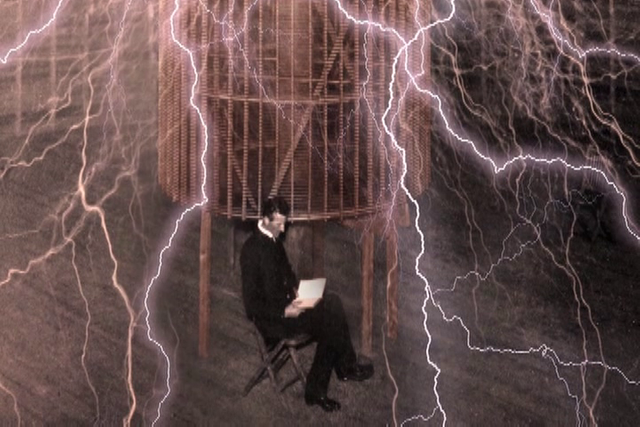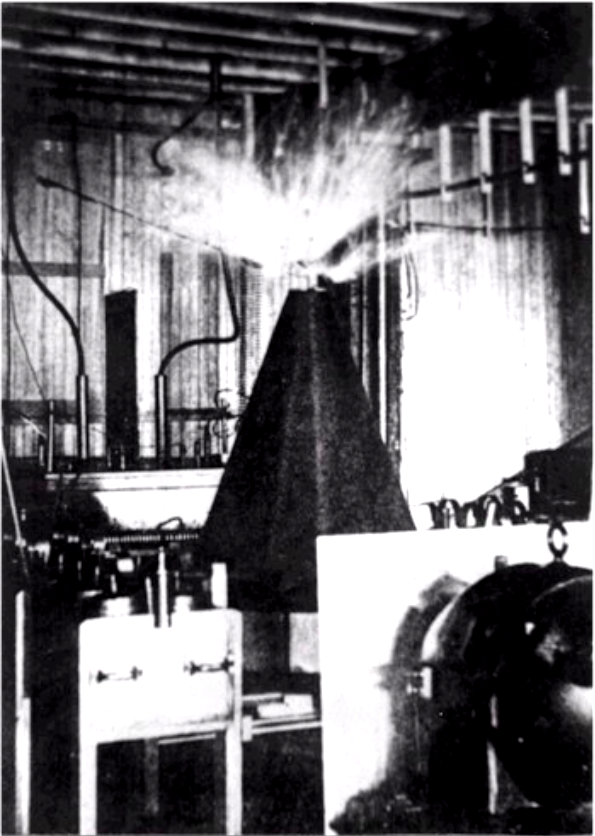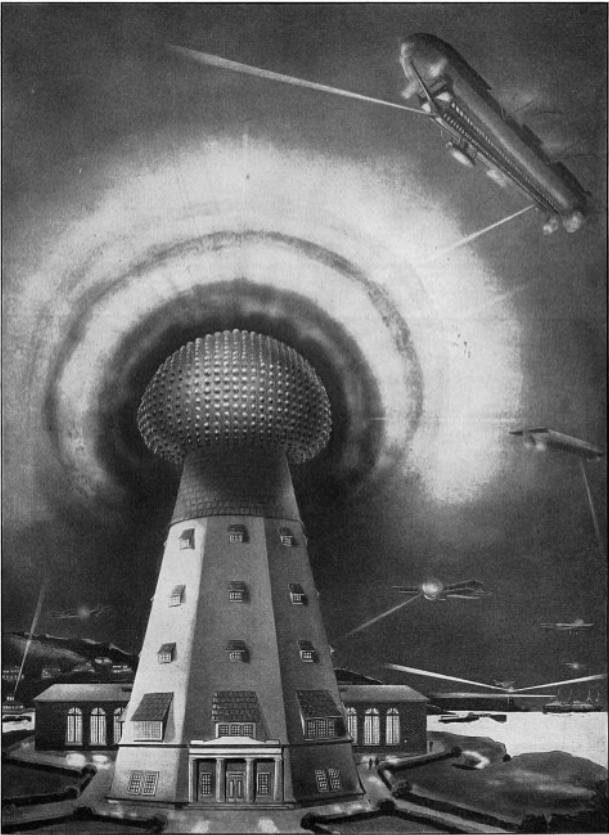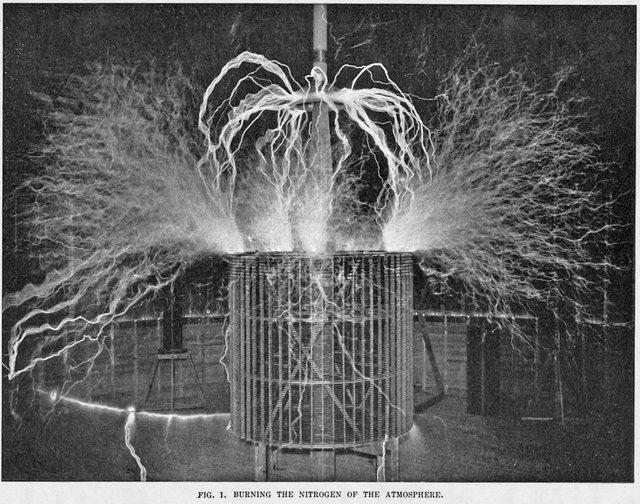Reading Nikola Tesla – part 3: Burning Nitrogen...
Here we are in 2018, over a hundred years later speculating about what could have been Nikola Tesla’s secret. I then think to myself: if only I could show you what I read, you would understand that there is no secret. When I read his articles and patents from 1900 onward, what I see is a man desperately trying to get his views across. He tries again and again in many different ways, but no-one seems to see what I see.

It is my sincere wish that one day people will read Tesla’s articles and really understand what he is saying.
So… Let me take you by the hand an walk you through his most famous article: “The Problem of Increasing Human Energy”, published in Century Illustrated Magazine of June 1900.
In this third part we take a look at “burning Nitrogen”, what could that mean?
We continue in the main article where we’d left off.
THE FIRST PROBLEM: HOW TO INCREASE THE HUMAN MASS
—THE BURNING OF ATMOSPHERIC NITROGEN.
Viewed generally, there are obviously two ways of increasing the mass of mankind: first, by aiding and maintaining those forces and conditions which tend to increase it; and, second, by opposing and reducing those which tend to diminish it. The mass will be increased by careful attention to health, by substantial food, by moderation, by regularity of habits, by promotion of marriage, by conscientious attention to children, and, generally stated, by the observance of all the many precepts and laws of religion and hygiene. But in adding new mass to the old, three cases again present themselves. Either the mass added is of the same velocity as the old, or it is of a smaller or of a higher velocity. To gain an idea of the relative importance of these cases, imagine a train composed of, say, one hundred locomotives running on a track, and suppose that, to increase the energy of the moving mass, four more locomotives are added to the train. If these four move at the same velocity at which the train is going, the total energy will be increased four per cent.; if they are moving at only one half of that velocity, the increase will amount to only one per cent.; if they are moving at twice that velocity, the increase of energy will be sixteen per cent. This simple illustration shows that it is of greatest importance to add mass of a higher velocity. Stated more to the point, if, for example, the children be of the same degree of enlightenment as the parents,—that is, mass of the "same velocity,"—the energy will simply increase proportionately to the number added. If they are less intelligent or advanced, or mass of "smaller velocity," there will be a very slight gain in the energy; but if they are further advanced, or mass of "higher velocity," then the new generation will add very considerably to the sum total of human energy. any addition of mass of "smaller velocity," beyond that indispensable amount required by the law expressed in the proverb, "Mens sana in corpore sano," should be strenuously opposed. For instance, the mere development of muscle, as aimed at in some of our colleges, I consider equivalent to adding mass of "smaller velocity," and I would not commend it, although my views were different when I was a student myself. Moderate exercise, insuring the right balance between mind and body, and the highest efficiency of performance, is, of course, a prime requirement. The above example shows that the most important result to be attained is the education, or the increase of the "velocity," of the mass newly added.
The first part is on how to increase charge or current, and special attention is given to adding new charge at a higher potential or temperature so to increase the average. This is done in the Magnifying Transmitter when it cools down “the medium” so to attract heat. We will get into that in much more detail later on. Also in the mechanism to distribute power this principle is used. The Magnifying Transmitter creates a standing wave in the Earth by adding small packages of very high voltage. The added packages are of a higher voltage than the standing wave in the Earth, thus increasing its energy.
Conversely, it scarcely need be stated that everything that is against the teachings of religion and the laws of hygiene is tending to decrease the mass. Whisky, wine, tea coffee, tobacco, and other such stimulants are responsible for the shortening of the lives of many, and ought to be used with moderation. But I do not think that rigorous measures of suppression of habits followed through many generations are commendable. It is wiser to preach moderation than abstinence. We have become accustomed to these stimulants, and if such reforms are to be effected, they must be slow and gradual. Those who are devoting their energies to such ends could make themselves far more useful by turning their efforts in other directions, as, for instance, toward providing pure water.
For every person who perishes from the effects of a stimulant, at least a thousand die from the consequences of drinking impure water. This precious fluid, which daily infuses new life into us, is likewise the chief vehicle through which disease and death enter our bodies. The germs of destruction it conveys are enemies all the more terrible as they perform their fatal work unperceived. They seal our doom while we live and enjoy. The majority of people are so ignorant or careless in drinking water, and the consequences of this are so disastrous, that a philanthropist can scarcely use his efforts better than by endeavouring to enlighten those who are thus injuring themselves. By systematic purification and sterilization of the drinking water the human mass would be very considerably increased. It should be made a rigid rule—which might be enforced by law—to boil or to sterilize otherwise the drinking water in every household and public place. The mere filtering does not afford sufficient security against infection. All ice for internal uses should be artificially prepared from water thoroughly sterilized. The importance of eliminating germs of disease from the city water is generally recognized, but little is being done to improve the existing conditions, as no satisfactory method of sterilizing great quantities of water has yet been brought forward. By improved electrical appliances we are now enabled to produce ozone cheaply and in large amounts, and this ideal disinfectant seems to offer a happy solution of the important question.
It is interesting to note that electricity has often been seen as a fluid (“juice”). I think this is an intro to the next paragraphs where it becomes more clear that he is talking about using electrical power that is generated in a way that brings destruction in one way or another (burning fuel, toxic or radio-active waste etc.).
Gambling, business rush, and excitement, particularly on the exchanges, are causes of much mass reduction, all the more so because the individuals concerned represent units of higher value. Incapacity of observing the first symptoms of an illness, and careless neglect of the same, are important factors of mortality. In noting carefully every new sign of approaching danger, and making conscientiously every possible effort to avert it, we are not only following wise laws of hygiene in the interest of our well-being and the success of our labours, but we are also complying with a higher moral duty. Everyone should consider his body as a priceless gift from one whom he loves above all, as a marvellous work of art, of indescribable beauty and mastery beyond human conception, and so delicate and frail that a word, a breath, a look, nay, a thought, may injure it. Uncleanliness, which breeds disease and death, is not only a self destructive but highly immoral habit. In keeping our bodies free from infection, healthful, and pure, we are expressing our reverence for the high principle with which they are endowed. He who follows the precepts of hygiene in this spirit is proving himself, so far, truly religious. Laxity of morals is a terrible evil, which poisons both mind and body, and which is responsible for a great reduction of the human mass in some countries. Many of the present customs and tendencies are productive of similar hurtful results. For example, the society life, modern education and pursuits of women, tending to draw them away from their household duties and make men out of them, must needs detract from the elevating ideal they represent, diminish the artistic creative power, and cause sterility and a general weakening of the race. A thousand other evils might be mentioned, but all put together, in their bearing upon the problem under discussion, they could not equal a single one, the want of food, brought on by poverty, destitution, and famine. Millions of individuals die yearly for want of food, thus keeping down the mass. Even in our enlightened communities, and not withstanding the many charitable efforts, this is still, in all probability, the chief evil. I do not mean here absolute want of food, but want of healthful nutriment.
Our society requires energy (food) and what is more important; “sustainable energy” (healthful nutriment). Tesla sees our society as a living being that now needs electric power to grow. But we must be careful not to poison our society building power plants that produce toxic waste. “Uncleanliness breeds disease and death”
How to provide good and plentiful food is, therefore, a most important question of the day. On the general principles the raising of cattle as a means of providing food is objectionable, because, in the sense interpreted above, it must undoubtedly tend to the addition of mass of a "smaller velocity." It is certainly preferable to raise vegetables, and I think, therefore, that vegetarianism is a commendable departure from the established barbarous habit. That we can subsist on plant food and perform our work even to advantage is not a theory, but a well-demonstrated fact. Many races living almost exclusively on vegetables are of superior physique and strength. There is no doubt that some plant food, such as oatmeal, is more economical than meat, and superior to it in regard to both mechanical and mental performance. Such food, moreover, taxes our digestive organs decidedly less, and, in making us more contented and sociable, produces an amount of good difficult to estimate. In view of these facts every effort should be made to stop the wanton and cruel slaughter of animals, which must be destructive to our morals. To free ourselves from animal instincts and appetites, which keep us down, we should begin at the very root from which we spring: we should effect a radical reform in the character of the food.
The burning of fossil fuels must be stopped and changed into something less destructive and barbaric. Also note that Tesla tries to tell us to get our energy as close as possible from the source. (as much is lost in “exchanges”)
There seems to be no philosophical necessity for food. We can conceive of organized beings living without nourishment, and deriving all the energy they need for the performance of their life functions from the ambient medium. In a crystal we have the clear evidence of the existence of a formative life-principle, and though we cannot understand the life of a crystal, it is none the less a living being. There may be, besides crystals, other such individualized, material systems of beings, perhaps of gaseous constitution, or composed of substance still more tenuous. In view of this possibility,—nay, probability, we cannot apodictically deny the existence of organized beings on a planet merely because the conditions on the same are unsuitable for the existence of life as we conceive it. We cannot even, with positive assurance, assert that some of them might not be present here, in this our world, in the very midst of us, for their constitution and life-manifestation may be such that we are unable to perceive them.
There must be a way to derive our energy directly from the ambient medium. The fact that we do not yet perceive this energy does not mean that it is not there. Tesla clearly refers to an ether-like medium here, in which life (electricity) exists.
The production of artificial food as a means for causing an increase of the human mass naturally suggests itself, but a direct attempt of this kind to provide nourishment does not appear to me rational, at least not for the present. Whether we could thrive on such food is very doubtful. We are the result of ages of continuous adaptation, and we cannot radically change without unforeseen and, in all probability, disastrous consequences. So uncertain an experiment should not be tried. By far the best way, it seems to me, to meet the ravages of the evil, would be to find ways of increasing the productivity of the soil. With this object the preservation of forests is of an importance which cannot be overestimated, and in this connection, also, the utilization of water-power for purposes of electrical transmission, dispensing in many ways with the necessity of burning wood, and tending thereby to forest preservation, is to be strongly advocated. But there are limits in the improvement to be effected in this and similar ways.
We should not change the sort of energy that we are using in any way. We must increase the productivity of that energy sources that we already have. At the same time this is a reference to using the Earth as a distribution channel, as it is in the next paragraph.
To increase materially the productivity of the soil, it must be more effectively fertilized by artificial means. The question of food-production resolves itself, then, into the question how best to fertilize the soil. What it is that made the soil is still a mystery. To explain its origin is probably equivalent to explaining the origin of life itself. The rocks, disintegrated by moisture and heat and wind and weather, were in themselves not capable of maintaining life. Some unexplained condition arose, and some new principle came into effect, and the first layer capable of sustaining low organisms, like mosses was formed. These, by their life and death, added more of the life sustaining quality to the soil, and higher organisms could then subsist, and so on and on, until at last highly developed plant and animal life could flourish. But though the theories are, even now, not in agreement as to how fertilization is effected, it is a fact, only too well ascertained, that the soil cannot indefinitely sustain life, and some way must be found to supply it with the substances which have been abstracted from it by the plants. The chief and most valuable among these substances are compounds of nitrogen, and the cheap production of these is, therefore, the key for the solution of the all-important food problem. Our atmosphere contains an inexhaustible amount of nitrogen, and could we but oxidise it and produce these compounds, an incalculable benefit for mankind would follow.
The source of our energy is to be found in our atmosphere, not in burning fuel. It is present in an 'inert' form, but it can be activated... Once activated we can 'fertilize' our Earth with it (send power through the Earth) so that industries (plants) can grow. This is a beautiful analogy of his Wardenclyffe project. But how do we activate and collect this energy?
Long ago this idea took a powerful hold on the imagination of scientific men, but an efficient means for accomplishing this result could not be devised. The problem was rendered extremely difficult by the extraordinary inertness of the nitrogen, which refuses to combine even with oxygen. But here electricity comes to our aid: the dormant affinities of the element are awakened by an electric current of the proper quality. As a lump of coal which has been in contact with oxygen for centuries without burning will combine with it when once ignited, so nitrogen, excited by electricity, will burn. I did not succeed, however, in producing electrical discharges exciting very effectively the atmospheric nitrogen until a comparatively recent date, although I showed, in May, 1891, in a scientific lecture, a novel form of discharge or electrical flame named "St. Elmo's hotfire," which, besides being capable of generating ozone in abundance, also possessed, as I pointed out on that occasion, distinctly the quality of exciting chemical affinities. This discharge or flame was then only three or four inches long, its chemical action was likewise very feeble, and consequently the process of oxidation of nitrogen was wasteful. How to intensify this action was the question. Evidently electric currents of a peculiar kind had to be produced in order to render the process of nitrogen combustion more efficient.
From Wiki: “St. Elmo's fire” is a weather phenomenon in which luminous plasma is created by a coronal discharge from a sharp or pointed object in a strong electric field in the atmosphere (such as those generated by thunderstorms or created by a volcanic eruption).
Basically this is the result of a potential difference between the Earth and the atmosphere. It was first mentioned here in his lecture of May 20th, 1891 "Experiments with Alternate Currents of Very High Frequency and Their Application to Methods of Artificial Illumination":
In many of these experiments, when powerful effects are wanted for a short time, it is advantageous to use iron cores with the primaries. In such case a very large primary coil may be wound and placed side by side with the secondary, and, the nearest terminal of the latter being connected to the primary, a laminated iron core is introduced through the primary into the secondary as far as the streams will permit. Under these conditions an excessively powerful brush, several inches long, which may be appropriately called "St. Elmo's hot fire", may be caused to appear at the other terminal of the secondary, producing striking effects. It is a most powerful ozonizer, so powerful indeed, that only a few minutes are sufficient to fill the whole room with the smell of ozone, and it undoubtedly possesses the quality of exciting chemical affinities.
For the production of ozone, alternating currents of very high frequency are eminently suited, not only on account of the advantages they offer in the way of conversion but also because of the fact, that the ozonizing action of a discharge is dependent on the frequency as well as on the potential, this being undoubtedly confirmed by observation.
Then after the burning of Tesla's lab Thomas Commerford Martin writes in his article of April 1895, “Tesla's Oscillator and Other Inventions ”:
PART of Mr. Tesla's more recent work has been in the direction here indicated; for in his oscillator he has not simply a new practical device, but a new implement of scientific research. With the oscillator, if he has not as yet actually determined the earth's electrical charge or —capacity,— he has obtained striking effects which conclusively demonstrate that he has succeeded in disturbing it. He connects to the earth, by one of its ends, a coil (see Fig. 15) in which rapidly vibrating currents are produced, the other end being free in space. With this coil he does actually what one would be doing with a pump forcing air into an elastic football. At each alternate stroke the ball would expand and contract. But it is evident that such a ball, if filled with air, would, when suddenly expanded or contracted, vibrate at its own rate. Now if the strokes of the pump be so timed that they are in harmony with the individual vibrations of the ball, an intense vibration or surging will be obtained. The purple streamers electricity thus elicited from the earth and pouring out to the ambient air are marvellous.
This quote refers to a picture that Tesla shows in his pre-hearing interview of 1916 saying:

Apparatus in action illustrating the first step in the evolution of the magnifying transmitter in the laboratory at 35 South Fifth Avenue.
Back to our main article:
The first advance was made in ascertaining that the chemical activity of the discharge was very considerably increased by using currents of extremely high frequency or rate of vibration. This was an important improvement, but practical considerations soon set a definite limit to the progress in this direction. Next, the effects of the electrical pressure of the current impulses, of their wave-form and other characteristic features, were investigated. Then the influence of the atmospheric pressure and temperature and of the presence of water and other bodies was studied, and thus the best conditions for causing the most intense chemical action of the discharge and securing the highest efficiency of the process were gradually ascertained.
Note to Fig. 1.—This result is produced by the discharge of an electrical oscillator giving twelve million volts. The electrical pressure, alternating one hundred thousand times per second, excites the normally inert nitrogen, causing it to combine with the oxygen. The flame-like discharge shown in the photograph measures sixty-five feet across.
Naturally, the improvements were not quick in coming; still, little by little, I advanced. The flame grew larger and larger, and its oxidizing action grew more intense. From an insignificant brush-discharge a few inches long it developed into a marvellous electrical phenomenon, a roaring blaze, devouring the nitrogen of the atmosphere and measuring sixty or seventy feet1 across. Thus slowly, almost imperceptibly, possibility became accomplishment. All is not yet done, by any means, but to what a degree my efforts have been rewarded an idea may be gained from an inspection of Fig. 1, which, with its title, is self explanatory. The flame-like discharge visible is produced by the intense electrical oscillations which pass through the coil shown, and violently agitate the electrified molecules of the air. By this means a strong affinity is created between the two normally indifferent constituents of the atmosphere, and they combine readily, even if no further provision is made for intensifying the chemical action of the discharge. In the manufacture of nitrogen compounds by this method, of course, every possible means bearing upon the intensity of this action and the efficiency of the process will be taken advantage of, and, besides, special arrangements will be provided for the fixation of the compounds formed, as they are generally unstable, the nitrogen becoming again inert after a little lapse of time. Steam is a simple and effective means for fixing permanently the compounds. The result illustrated makes it practicable to oxidise the atmospheric nitrogen in unlimited quantities, merely by the use of cheap mechanical power and simple electrical apparatus. In this manner many compounds of nitrogen may be manufactured all over the world, at a small cost, and in any desired amount, and by means of these compounds the soil can be fertilized and its productiveness indefinitely increased. An abundance of cheap and healthful food, not artificial, but such as we are accustomed to, may thus be obtained. This new and inexhaustible source of food-supply will be of incalculable benefit to mankind, for it will enormously contribute to the increase of the human mass, and thus add immensely to human energy. Soon, I hope, the world will see the beginning of an industry which, in time to come, will, I believe, be in importance next to that of iron.
With this last sentence Tesla gives us a key to interpret this part. Later on in this article he says almost exactly the same thing, with one small change: “food” is replaced by “energy”.

This also validates us looking for more keys like this, and thus validates my interpretation.
So what is meant by “Burning Nitrogen”? We know we must seek to get our energy directly from the source. What is the source? Cosmic rays. How do we get their energy? We let the rays ionize our atmosphere and we collect the charges thus set free. But all ionizing rays have lost their energy in the upper regions of our atmosphere, so there is not enough energy in these rays left in the lower regions. Yet with high frequency high voltage we can lower the ionization threshold and have these atoms ionized. Next we collect the charges and pump them in a standing wave in our Earth. This energy can then be tapped everywhere on this planet with very simple apparatus.
As Tesla explains on his birthday in 1932, “Tesla Cosmic Ray Motor May Transmit Power ‘Round Earth”:
“ I will tell you in the most general way,” he said. “The cosmic ray ionizes the air, setting free many charges—ions and electrons. These charges are captured in a condenser which is made to discharge through the circuit of the motor.”
The ionization of the air would create a luminous halo exactly as pictured here:

Still having doubts? Don’t worry there is much more to come. ;)
In case you missed the earlier parts:
Part 1, laying the foundation
Part 2, what is electricity

I'm continuing to read with keen interest.
😄😇😄
